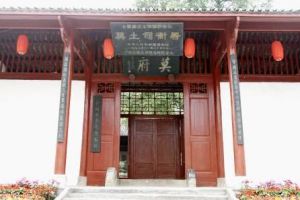Difference between revisions of "Office of Aboriginal Chieftain Mo"
imported>Ciic m (Created page with 'Lying at the northern foot of Mount Cuiping in Xincheng County, the complex was built in 1582 during the Ming Dynasty (1368-1644). It was turned into the the chieftai...') |
imported>Ciic |
||
| Line 2: | Line 2: | ||
The buildings are all brick and wood structures, combining the imperial style of the Central Plains and that of ethnic minorities living in the south. The stately halls, upturned eaves, carved windows and relief decorations are of high value for historical and cultural study as well as for tourist value. Housed in the complex are some 1,000 stone, gold and bronze articles, in addition to rare stone shovels and porcelains. | The buildings are all brick and wood structures, combining the imperial style of the Central Plains and that of ethnic minorities living in the south. The stately halls, upturned eaves, carved windows and relief decorations are of high value for historical and cultural study as well as for tourist value. Housed in the complex are some 1,000 stone, gold and bronze articles, in addition to rare stone shovels and porcelains. | ||
| + | |||
| + | [[File:Office of Aboriginal Chieftain Mo, Yicheng.jpg|thumb|Office of Aboriginal Chieftain Mo, Yicheng]] | ||
[[category:tourism]] | [[category:tourism]] | ||
Latest revision as of 07:21, 22 March 2010
Lying at the northern foot of Mount Cuiping in Xincheng County, the complex was built in 1582 during the Ming Dynasty (1368-1644). It was turned into the the chieftain's office in 1906. The complex is composed of several groups of buildings, including the government office, the ancestral temple and the residence of the chieftain. Inside the office compound are a prison, a court, a sacrificial hall, side rooms, drawing rooms and parade ground. Covering an area of 389,000 sq. m, it is the largest of its kind in Asia, known as the "Imperial Palace" of the Zhuang Ruler.
The buildings are all brick and wood structures, combining the imperial style of the Central Plains and that of ethnic minorities living in the south. The stately halls, upturned eaves, carved windows and relief decorations are of high value for historical and cultural study as well as for tourist value. Housed in the complex are some 1,000 stone, gold and bronze articles, in addition to rare stone shovels and porcelains.
